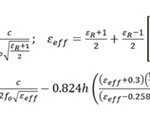MPLS, or Multi-Protocol Label Switching, is a networking technology used to efficiently direct data packets along a network using labels. These labels replace traditional IP routing tables, enabling faster and more scalable packet forwarding based on label information rather than IP addresses.
MPLS works by assigning labels to data packets at the ingress router when they enter the MPLS network. These labels determine the forwarding path through the network, creating virtual circuits called Label Switched Paths (LSPs). Intermediate routers along the path use these labels to switch packets quickly to their destination without the need for complex IP lookups at each hop.
There are three types of MPLS:
- MPLS LDP (Label Distribution Protocol): Uses LDP to distribute labels and establish LSPs based on routing information.
- MPLS RSVP-TE (Resource Reservation Protocol – Traffic Engineering): Enables explicit route configuration and bandwidth reservation for traffic engineering purposes.
- MPLS Segment Routing: Directs packets through the network using a list of instructions encoded in the packet header, known as segments.
The three MPLS label operations are:
- Push: Adding a new label to an incoming packet.
- Pop: Removing the top label from a packet before forwarding it.
- Swap: Exchanging the top label of an incoming packet with a new label.
IP MPLS fundamentals involve integrating MPLS with IP networks to improve efficiency and scalability in routing and traffic management. It combines the flexibility of IP routing with the speed and simplicity of MPLS label switching, offering enhanced Quality of Service (QoS) capabilities and traffic engineering functionalities for modern network environments.

